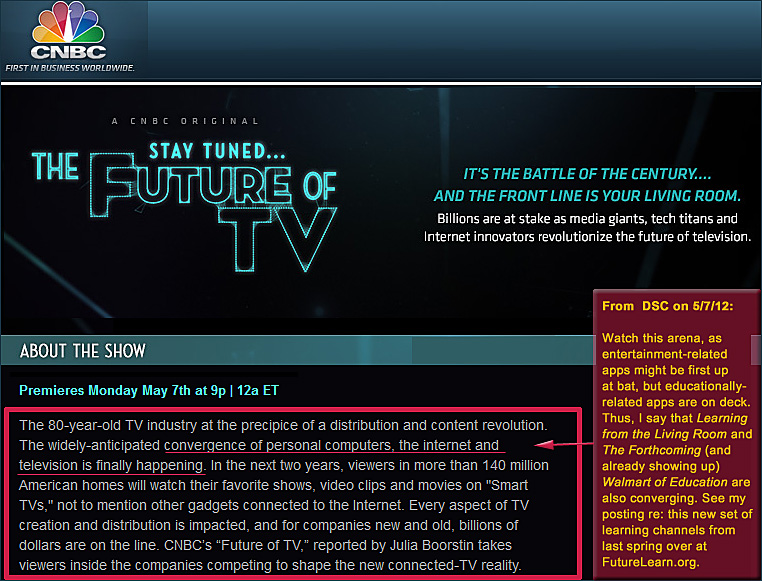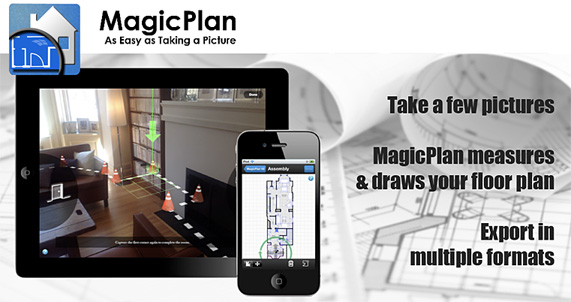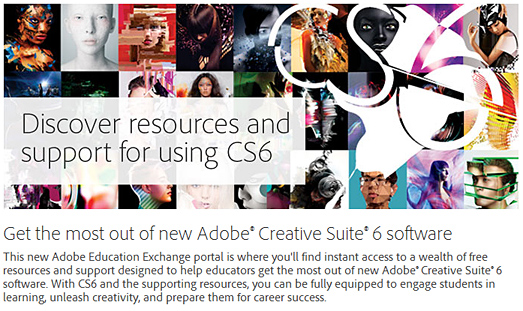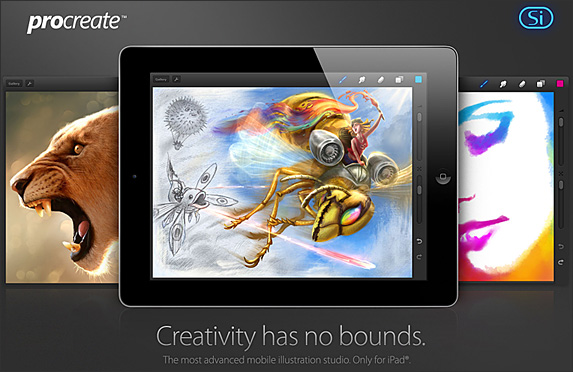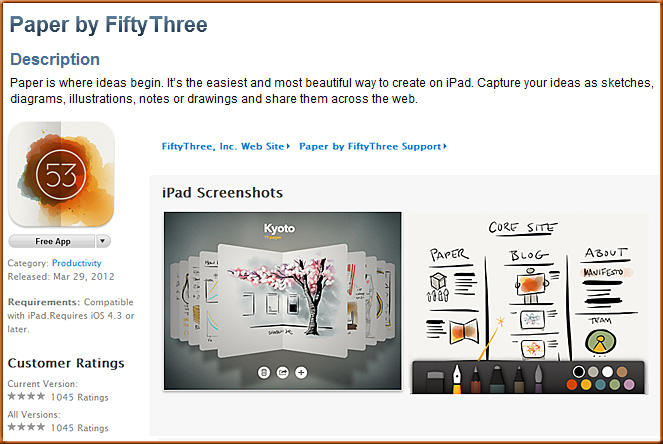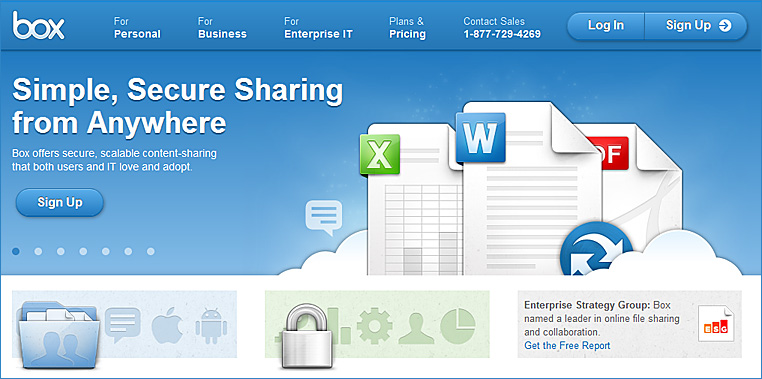.
Also see:
- A new learning “channel” is developing — posted on April 30, 2011 at FutureLearn.org by Daniel Christian
and…
- Aereo.com
- NimbleTV.com
- Samsung launches their interactive Smart TVs in India
- Why IPTV is the Future
- Interactive eBook Apps: The Reinvention of Reading and Interactivity
- The 5 C’s of connected TV
- Research and Markets: The 2012 Battle for Dominance in the Digital Living Room Report: 400 Bn Households Worldwide to have some form of Smart TV by 2016
DUBLIN–(BUSINESS WIRE)–Research and Markets (http://www.researchandmarkets.com/research/55tgll/the_battle_for_dom) has announced the addition of the “The Battle for Dominance in the Digital Living Room” report to their offering. A growing number of devices are starting to connect television sets to the Internet allowing for the delivery of a wide variety of new entertainment services. The Battle for Dominance in the Digital Living Room looks at the battle to connect televsion sets in consumers’ homes to the Internet and the impact this will have on the media industry. The focus is on providing an introduction to the issues involved with connected TVs and a look at the baseline forecasts for connected households. Over 400 million households worldwide to have some form of Smart TV by 2016. - The future of TV isn’t TV, it’s broadband.
- Future of the book for IDEO
Addendums on 5/8/12:
Double vision: TV gets interactive — from thetowntalk.com by Fraizer Moore
Piers Fawkes: The future of TV — from psfk.com by Piers Fawkes
A solid Q&A with such questions as:
- The old hierarchical vertical order of: channel – series – episode, seems to be in danger, letting the horizontal disorder take its place. What do you think broadcasters can do to serve people during this shift?
- The TV channel is being challenged, first by VOD and now by internet based services. How do you think the TV channels’ role will evolve in the next 5 years? Will the traditional push-based model maintain its centrality or will users be looking for search-only and pull-based alternatives?
- A new form of TV means new revenue models. Who do you think will finance the next successful TV show in 10 years and how? Will the new channels’ role generate new business models? How you imagine them?
- To protect our brain from information overload we need to filter and recommendations are a form of filtering. How do you think people’s recommendations will shape the future role of TV channels in the next years to come?
- Artificial Intelligence, Smart Agents and algorithms are directing us into a world of Adaptive User Interfaces capable of recognizing different users and provide them with an anticipated, personalized experience. How do you think the future TV will shape around people’s habits and tastes?









